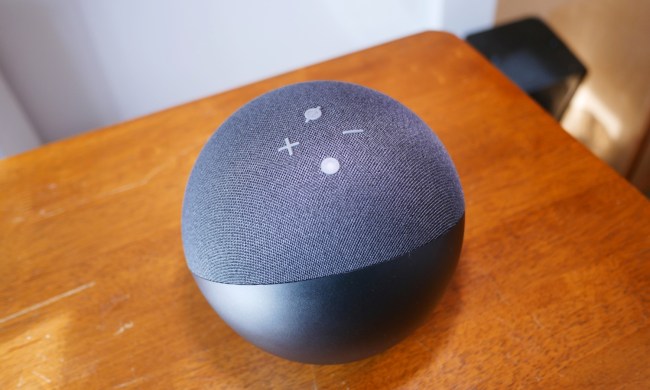Nearly a year ago, Amazon opened its SDK to developers, allowing them to put Alexa’s AI into their own devices. That means you’ll someday be able to ask Alexa the weather on your non-Amazon alarm clock, instead of through an Echo speaker. The family-oriented speaker Triby is the first device not made by the retail giant to incorporate Alexa.
The portable, magnetic speaker, made by Invoxia, is meant to live on your fridge and has big, child-friendly buttons. One of its main functions is its ability to let kids call their parents using voice-over-IP with the push of a button, as long as said adults have the iOS app (Android is available in beta starting today) installed. It can also stream internet radio from Prime Music, iHeartRadio, or TuneIn. Now with the addition of Alexa, it can also tell you how tall the Empire State Building is, what the weather will be like, and when Bran’s next violin lesson is.
“The Triby is a shallow device with relatively little space for speakers, and that makes achieving robust sound a significant challenge.”
Alexa was able to turn off my SmartThings-connected lights, tell me the number of ounces of in a cup, and set a 10-minute timer. These were all useful things to have in the kitchen. The Triby also used the voice assistant to play me NPR and the latest episode of RadioLab. But when I asked Alexa to play my Kevin Devine Spotify playlist, she told me, “Spotify is not supported for this device.” Now, I was able to pull up Spotify on my phone and because my phone was paired with the Triby, I could play the music through the device’s speakers. I could also say, “Play Kevin Devine” and get some songs through Amazon Prime. However, Spotify is supported through the Echo, so this could be one very convincing argument as to why the Triby isn’t for you.
And if you’re listening to more than “The Wheels on the Bus,” you might find the sound-quality lacking. “The Triby is a shallow device with relatively little space for speakers, and that makes achieving robust sound a significant challenge,” Digital Trends senior editor and A/V expert Caleb Denison told me after giving the Triby a listen. It doesn’t hold up to many $100 Bluetooth speakers he’s tested.
“At first, the speaker’s overall volume of sound is surprising; robust, even. But it doesn’t take an audiophile to quickly learn the Triby lacks clarity and definition. I think a little too much emphasis was put on the midbass region for the sake of getting that ‘big’ sound from a small device. And the tradeoff is vocals that sound a little recessed, and treble that fails to shine. There also seems to be a ‘click’ around bass drum hits that sounds artificial,” he adds. While it’s not a terrible experience, it’s just not going to do your Mariah Carey playlist any justice.
The Triby has some adorable features. You can make little doodles or notes in the app and send them to the speaker’s e-Ink screen. When you do, a plastic yellow rectangle pops out from the side of the device. Your kid can pop it back in, so you’ll know your message was received. They can also hold down a button below the rectangle scroll through some emojis to let you know how they feel about your work of art.
The Triby feels like what it is: a speaker made for communicating with smartphone-less kids and providing some entertainment — and now it has some Alexa functionality tacked on. If you already had a $199 Triby, then the new voice assistance will be a welcome upgrade, but if you care about using your speaker to actually play music, you may want to look elsewhere.
Updated 4/28/2016: Updated to include the news that the Android app is available in beta today.






